If you want spectacular tourist attractions, the capital of Slovakia may not be your best choice. Apart from cheap food, drinks and opera tickets, it can’t compete with the nearby capitals Vienna and Budapest. Still, it’s a cozy city with a charming old town, full of Eastern Europe atmosphere. And for geography geeks, this city offers easy access to an international tripoint, one of only 176 places in the world where three countries meet. Many tripoints are located in water or otherwise inaccessible places. Slovakia, Austria and Hungary meet up on a field right outside the city, and you can freely visit that spot.
The following describes how I spent a long day in January 2020 checking out Bratislava and the tripoint. It’s all easy to figure out, but it does require some walking, so it’s best to start early.
We begin at Bratislava Castle. A sign informs us that the sector has not yet been chemically treated, so entering the area is entirely on our own risk. That’s okay.
Various structures have been present on this strategically important hill for at least two thousand years. Many cultures, including the Romans, controlled the commercial traffic on the Danube river from here. A castle was destroyed by Napoleon in 1811, and it lay in ruins until a reconstruction was completed in 1968. So this place is old or new, depending on how you look at it. I certainly can sense a lot of history present in the walls here.
The castle was restored to what it looked like when Queen Maria Theresa ruled from here. When she came to power of both Austria and Hungary, she promised she would spend much of her time in Hungary. Bratislava, then known as Pressburg, was part of Hungary. Because Bratislava is an easy trip from Vienna, she could fulfill her promise with minimal effort by coming here often.
These stairs were built to please Maria Theresa. I’ve seen better mirrors, but by 1760s standards, they were probably amazingly good.
Much of the castle has been turned into a puzzling mix of museum displays; the history of the hill and the castle, a chapel with religious icons, clocks, maps and globes, a couple of art galleries, and a panoramic view of the city. There’s also an exhibition about the end of the Soviet Union and its heavy influence on Eastern Europe. The importance of that event is indisputable, but using a display of early 1990s garments to show what demonstrators looked like back then is maybe to put emphasis on the least important parts of it.
Anyway, the entire museum can be hastily seen in one hour. If you spend two hours, you’ll have covered it properly.
Located just below the castle there’s an interesting piece of architecure. It’s the Bridge of the Slovak National Uprising, more commonly known as the UFO Bridge than for its more technical claim to fame; the world’s longest bridge to have one pylon and one cable-stayed plane. Whatever that means.
Inside the “UFO” you’ll find a fancy restaurant. Taking the elevator up to the observation deck is a bit pricey, but you can have the elevator fee deducted from your bill if you buy a main course at the restaurant.
Under that same bridge we find a local bus hub. Buses 90 and 91 frequently leave from here to Čunovo, a great starting point for a hike to the Slovakia/Austra/Hungary tripoint. Just get a cheap 24 hour ticket for zones 100 and 101, and you’ll be covered for all buses in Bratislava, including the region towards the border to Hungary. In 2020 that ticket cost about 3.50 Euros.
Čunovo is a quiet village with nothing much to see, but on a foggy January morning, it’s more than capable of setting a proper Eastern Bloc mood. Many buildings appear abandoned, although it may well be that this is a cheerful farming district during the summer. I can’t help but keep looking out for zombies to come stumbling around the corner, though.
I don’t see many people on my walk. It’s a chilly day. These guys wear fur and do not seem to mind.
From the map on my phone, I notice that my walk will bring me past an amusement park called Action Park. When I reach it, I’m a bit disappointed. I doubt there will be much action here until summer, and even then I would not enter the premises without proper insurance and protective gear.
A little bit further down the road I reach the border between Slovakia and Hungary. There’s no border control. The only evidence for the border is that the road seems to be slightly better maintained on the Hungarian side, and there are a few signs claiming there’s a border here.
Leaving the Hungarian road, I walk in a straight line south-west across the fields, closely tracing the actual border. The left side of these muddy tracks is Hungarian, on the right side there’s Slovakia. When you see it like this, you realize how artificial the concept of borders is. Both sides are exactly the same.
After a kilometer of walking across the fields, I reach an old border post, Rajka II. It’s completely abandoned. All objects of value have long since disappeared.
With no one around to guard the place, I decide to walk over and have a look.
The building remains standing, but all I find inside is Communist era rubble and ugly 1970s wallpaper covered in 2000s graffiti.
Cars whoosh past the long-gone windows, where before there were lengthy procedures that had to be followed to be allowed to cross the border.
I keep following the border for about two kilometers more. It’s an easy hike, and a bridge helps me get safely across a new and busy highway. This hike is part of the Iron Curtain Trail, one of the longest walking trails in Europe. It starts on a beach in the Arctic, where Norway and Russia meet. Then it follows the Finland-Russia border, the coast of the Baltics and Poland, cuts through the previous two Germanys, then Czechia, Slovakia, Hungary, Romania and Bulgaria, ending at the Black Sea. Altogether it’s roughly a 10,000 kilometers long hike, if you want to do the whole thing. It’s not the prettiest of walks, but it’s certainly full of recent tragical history.
I have no idea how it came to be, but the fact of the matter is that at the exact spot where these three countries meet, there’s a sculpture park. These are some of the ugliest sculptures I have seen anywhere on the planet, but it’s still a pleasant discovery in a place like this. Tripoints are often located out in a lake or a river, so just being able to stand on dry land is good enough for me.
It’s not entirely evident where the actual tripoint is. A triangular picnic table with different national banners on each side is the most inviting spot, but most likely the concrete pole in the background here is the right place. I run a few laps around both the table and the pole, just in case, to ensure that I cross a border at least ten times in just as many seconds. There’s not much else to do here.
The geek in me is deeply satisfied.
Having completed the goal of my little excursion, I happily walk back across the fields towards Bratislava.
At this small pond in the middle of a large field, a police car is waiting. They come up to me and ask to see my passport, possibly looking for illegal immigrants walking in from Hungary. Since I don’t look like an Arab and I don’t speak much of any Slavic language, they soon lose interest in me and point me in the general direction of Bratislava.
A good 25 years or so have passed since Simply Red released their “Greatest Hits” album. Slovakia is at last ready to welcome the band.
It’s an odd blast from the past. When Simply Red was at their peak, Bratislava was still an inaccessible city somewhere behind the Iron Curtain, off-limits to any Western cultural imperialism.
In the village Rusovce I find a bus to take me back to the city, saving me three hours of walking. The city looks dull and grey in the fog, but up-close it does actually have a lot of interesting details and bright colors.
Although it’s nowhere near as stylish and endowed with magnificent old buildings as Vienna, the old Slovak National Theatre on Hviezdoslav Square gives Bratislava’s old town a nice lift. This was of course built back when the city was a central part of the Austro-Hungarian empire.
I prefer history of the more recent kind, so I’m delighted when serendipity brings me to a shop that in large part is dedicated to an old children’s TV hero of mine; Krtek/The Mole.
Norway had only one TV channel when I grew up, a monopoly that lasted until 1988. The government-funded NRK ran on a low budget, so a lot of the programming was cheap productions from Eastern Europe. Cheap does not always mean bad, and we had nothing else to watch anyway. So The Mole made me laugh. Even on the seventh re-run.
Another impressive, old building is St Martin’s Cathedral. For centuries, this was where Hungary’s kings and queens were crowned. To commemorate this, the top of the tower is a gold-plated replica of the official crown of the ruler of Hungary. A skilled climber and a strong runner could get away with 8 kilograms of gold from up there!
I love it when someone decides that “Okay, this place looks terrible, but I can fix that”. Small details like this can at least temporarily change a place from falling down to uplifting.
Across the river from the old town is Petrzalka. It’s the most densely populated area in all of Central Europe, and basically just street after street of high-rise apartment buildings.
I always like to see with my own eyes how average people live when I travel. These streets are perfect for that. The atmosphere is pleasant, with a fairly good mix of concrete and greenery.
To cheer up the children of Petrzalka, someone decided to give them the opportunity to meet the cast from Frozen, Slav version.
I’m not sure if it will work. I have a feeling they probably should have done something with The Mole instead.
It’s getting late, and we head into the dark alleys of the old town. This is when they’re prettiest, in my opinion. Also, exploring them in near solitude makes it easier to imagine what life here may have been like throughout the different eras.
Bratislava has somewhat of a reputation as a bachelor party destination, thanks to plenty of cheap alcohol and adult entertainment options. This becomes instantly more visible after dark.
Strip clubs are among the more innocent ones. Apparently, being not Polish is this club’s main selling point. I’m not entirely sure why.
We will continue to Budapest by train. In the departure hall at the train station there’s this wonderfully intact Soviet era fresco from 1960, by František Gajdoš. Three capitalists on the left side are fleeing the scene, while Socialists from all over the world create a bright and happy future together, with the Sputnik satellite fresh in the sky.
In January’s abundance of coldness, one full day in Bratislava was enough for me. Some summer day I’ll happily give it another shot. If you go on a lengthy tour of Europe and need a break from exhausting sight-seeing, this city seems like a good place to relax for a few days without breaking your budget.
Whenever you come here, remember the tripoint!
Happy trails.
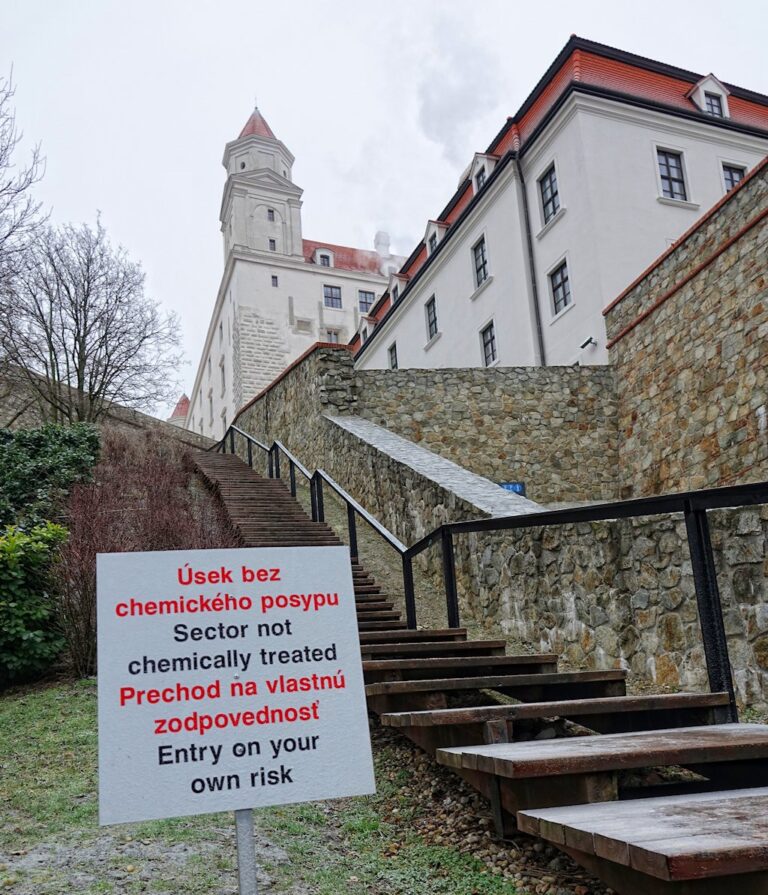
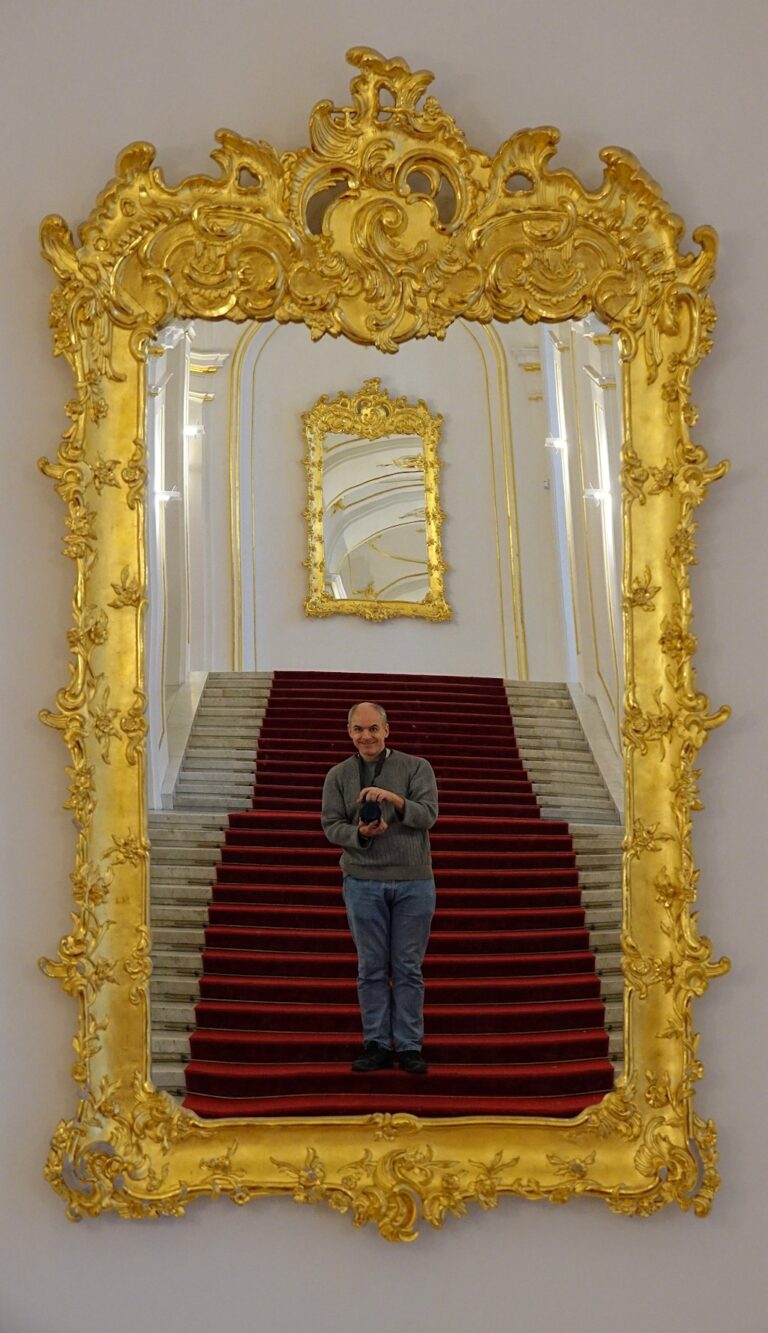
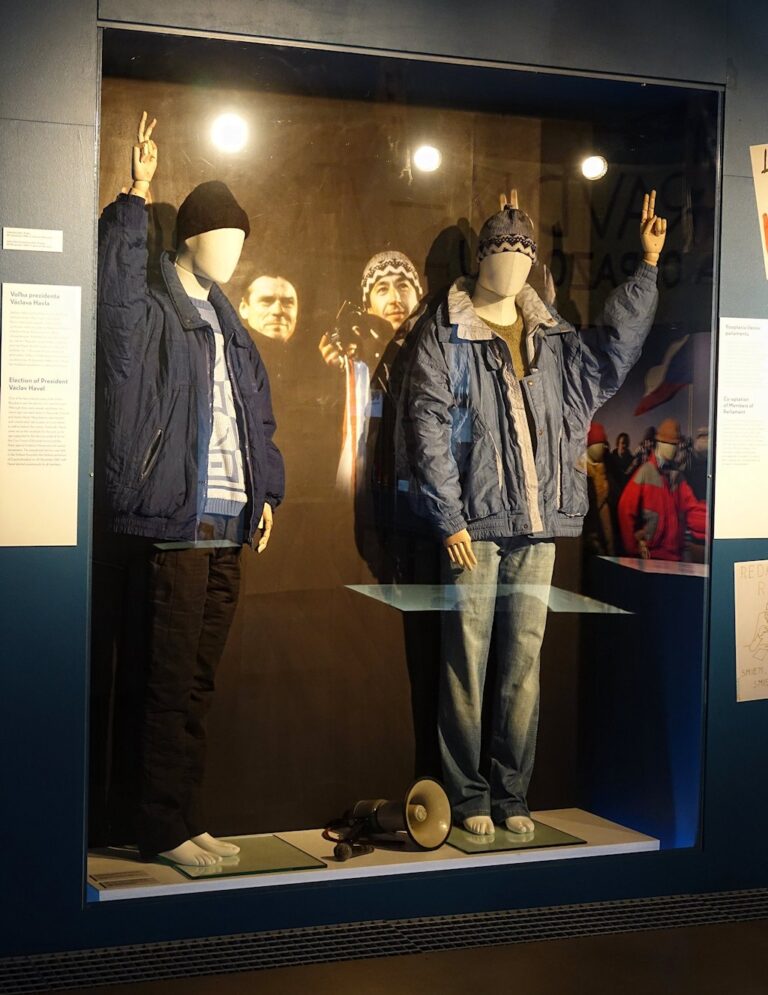
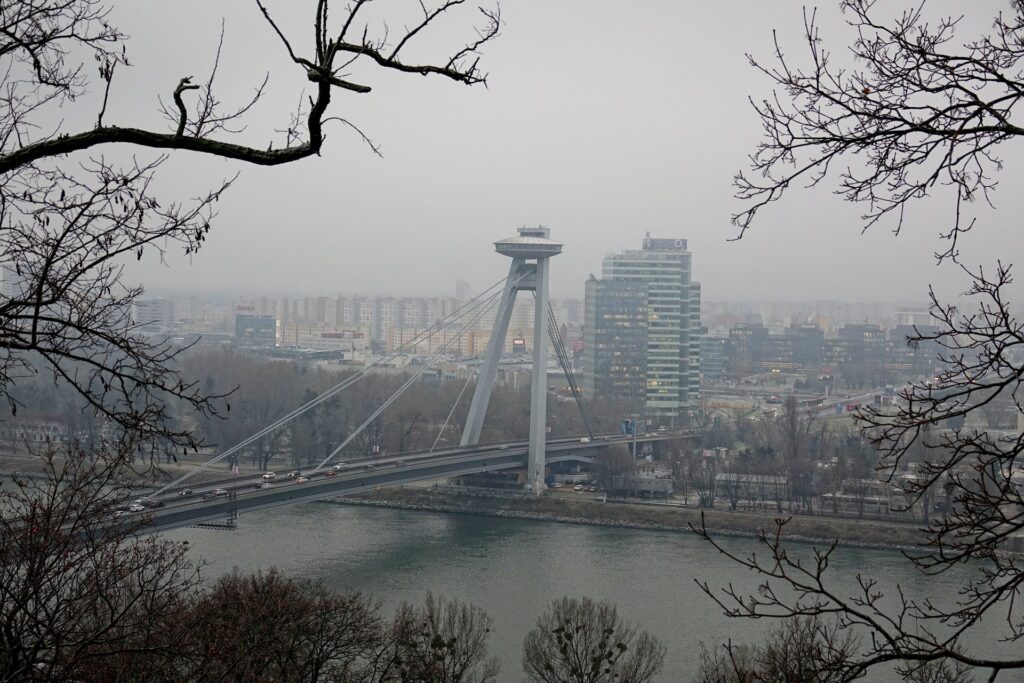
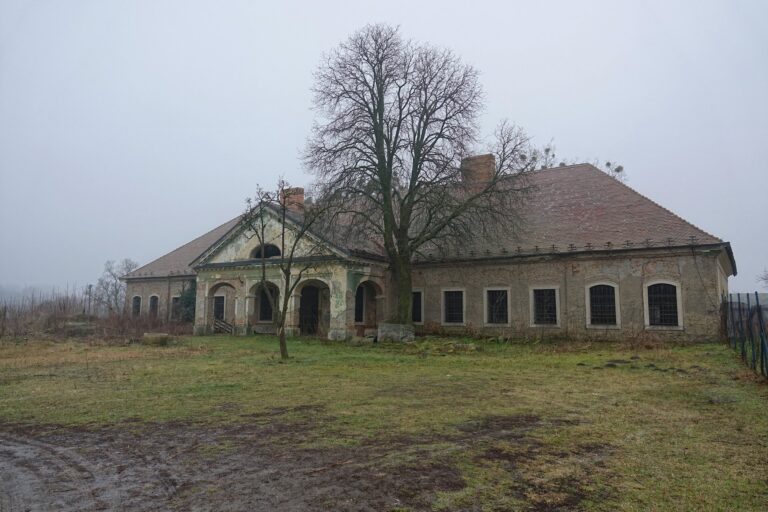
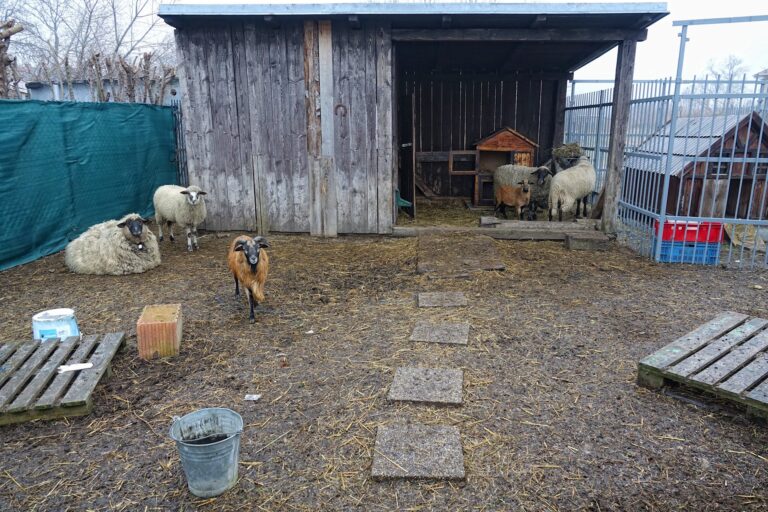
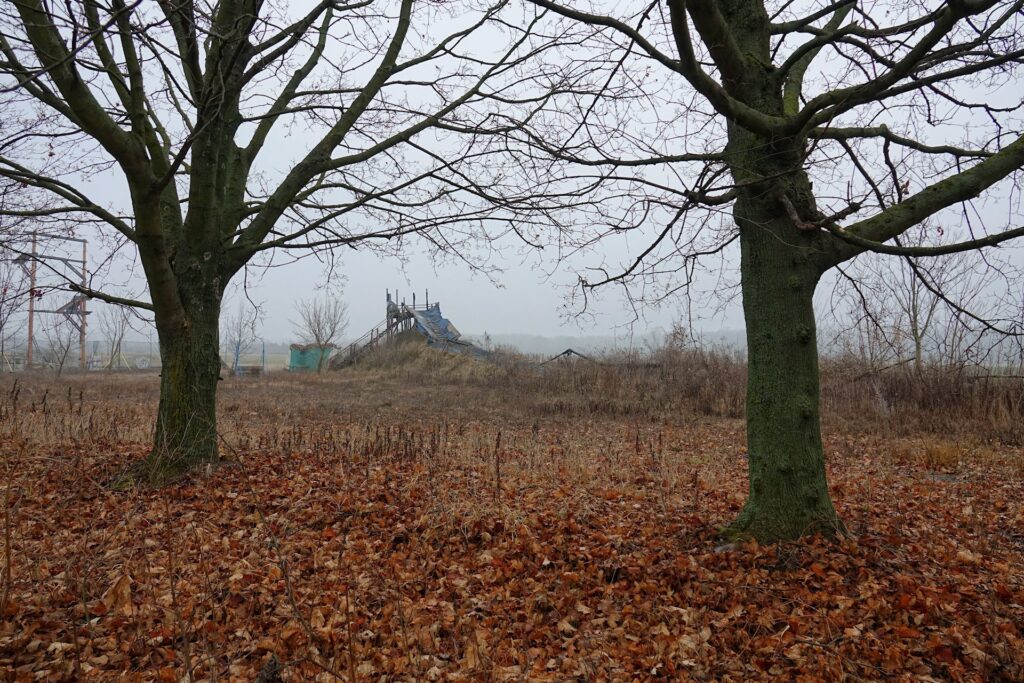
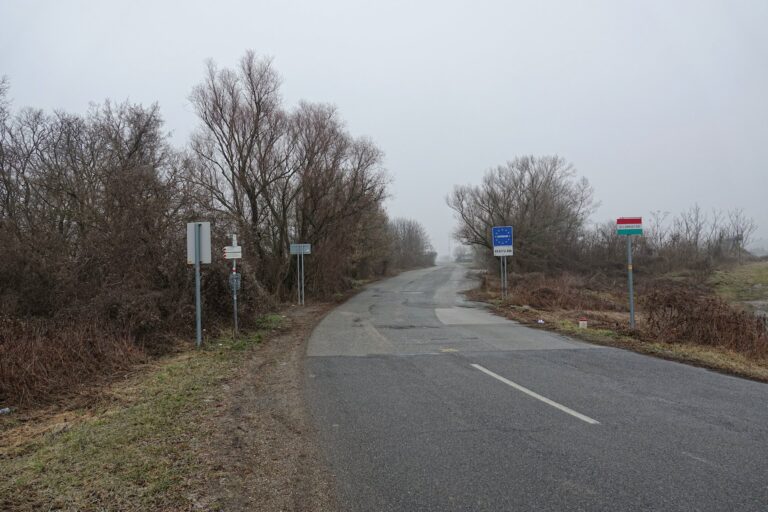
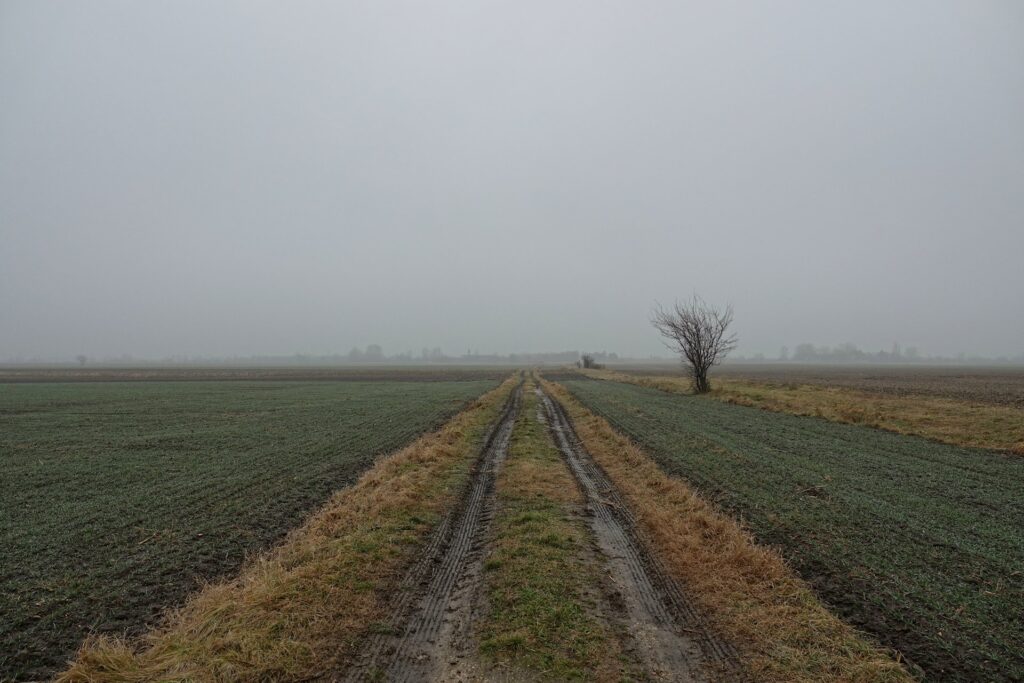

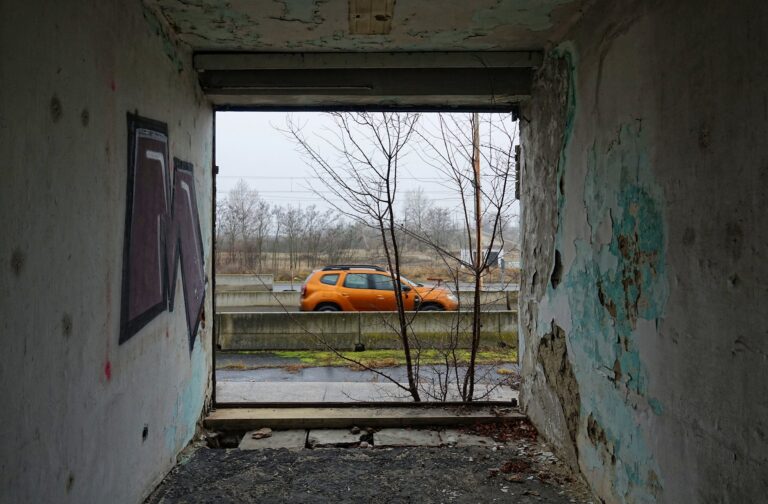

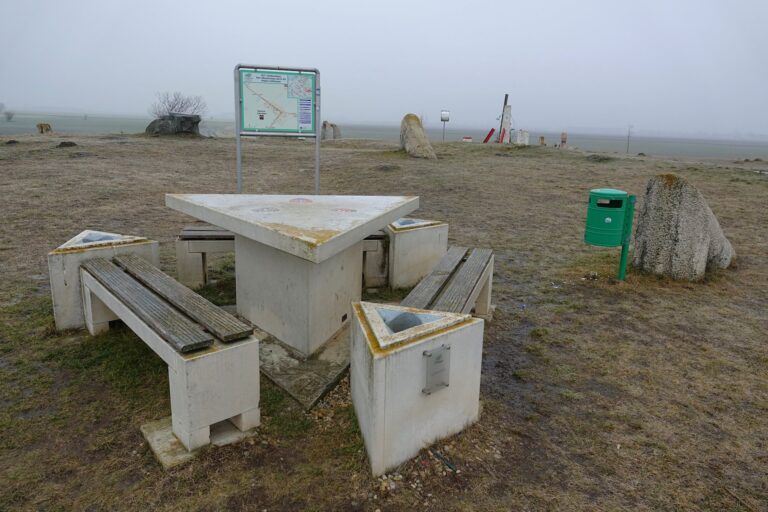


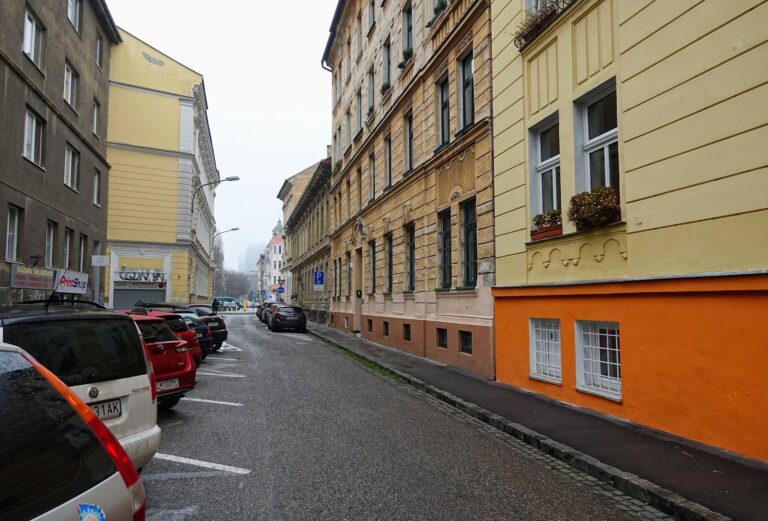

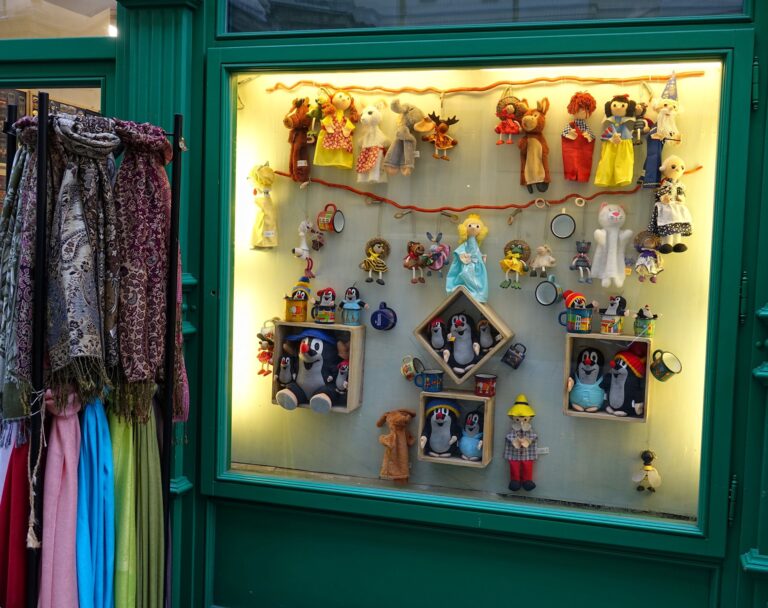
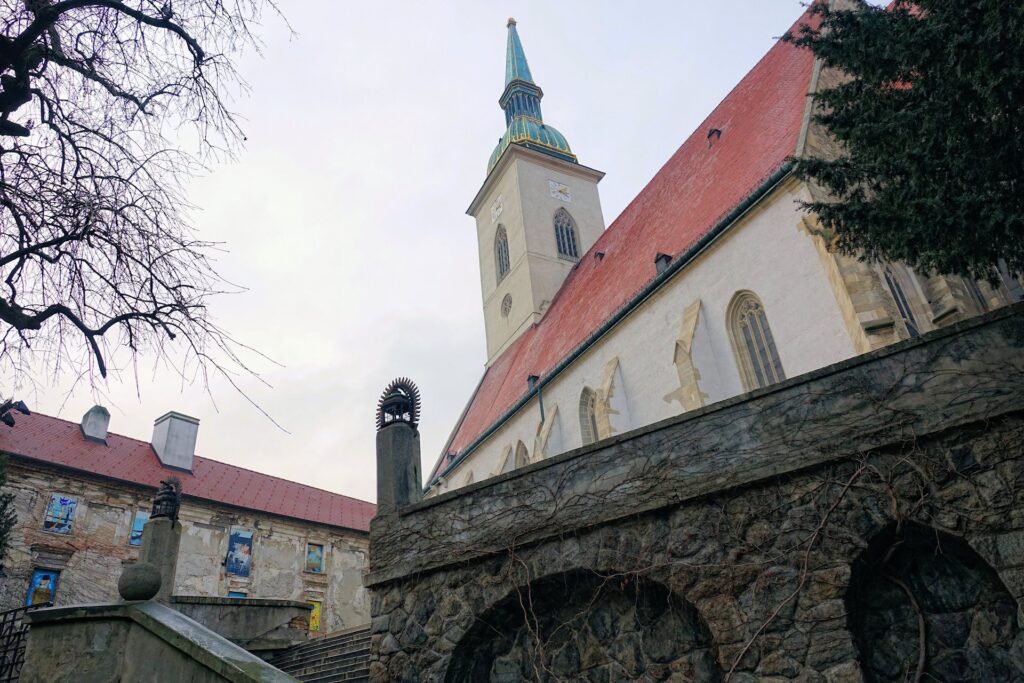
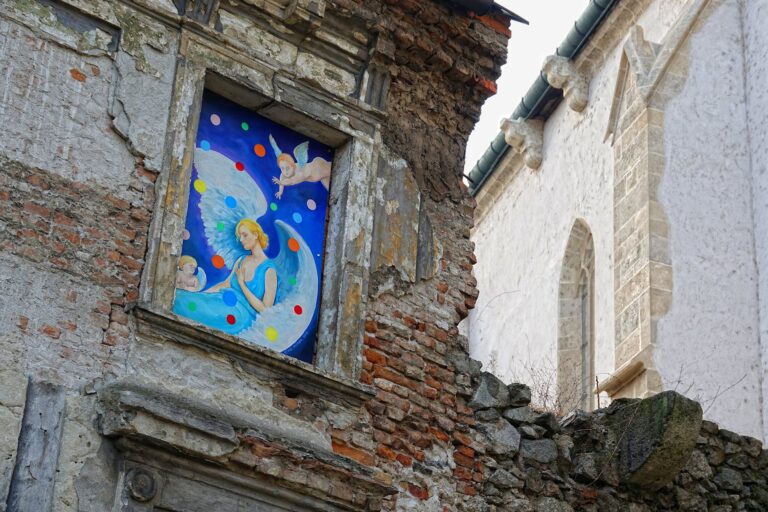

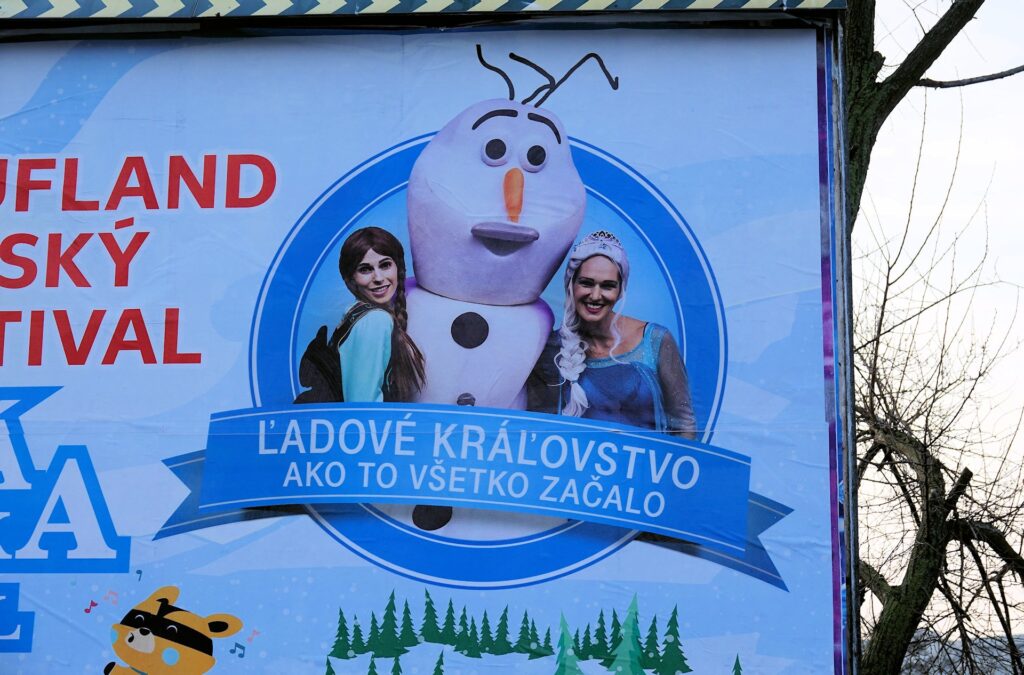
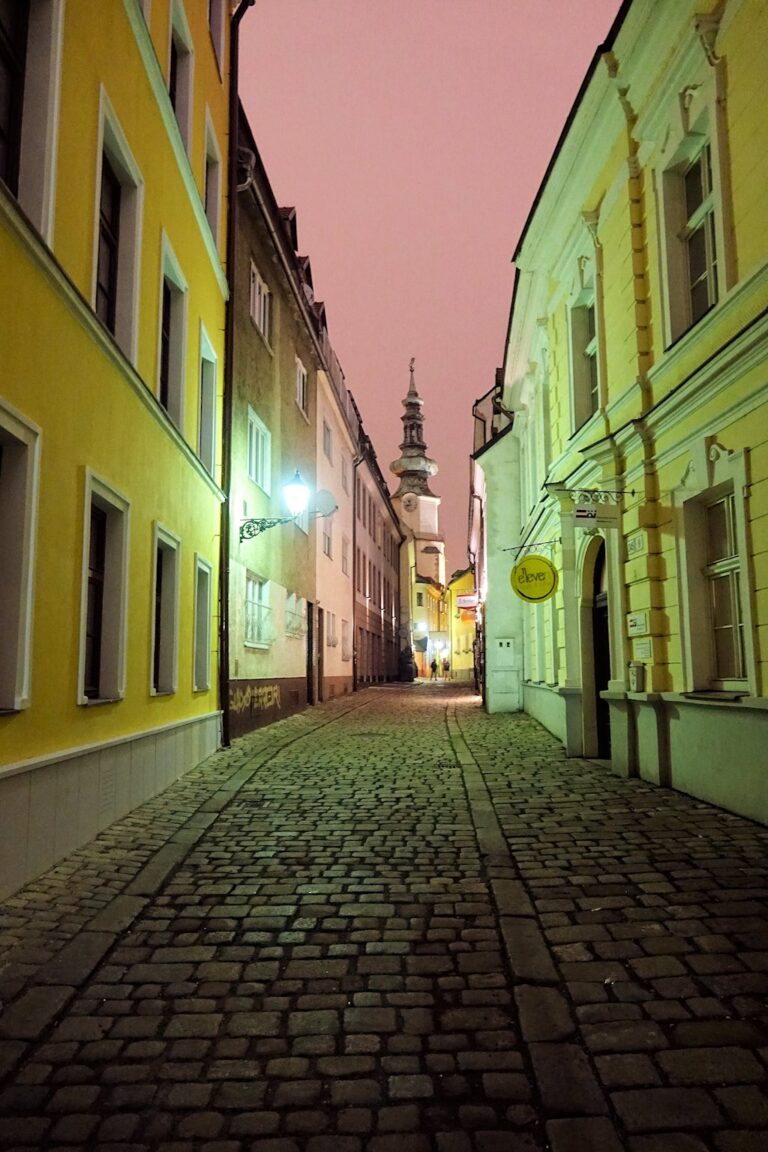
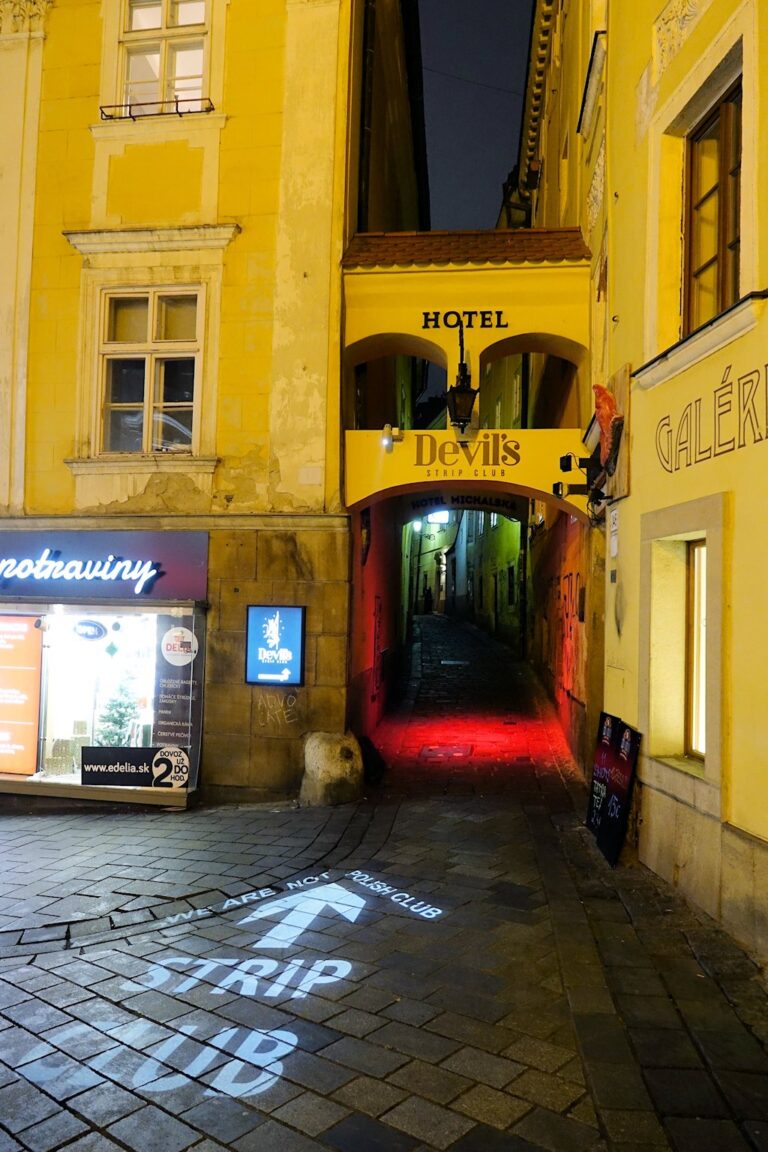
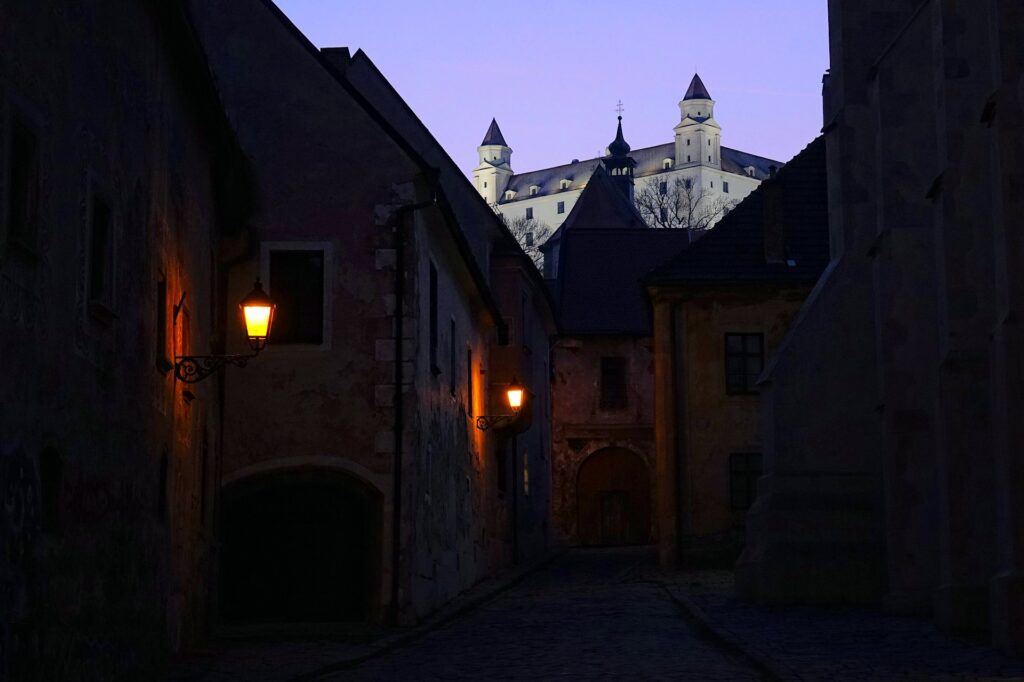
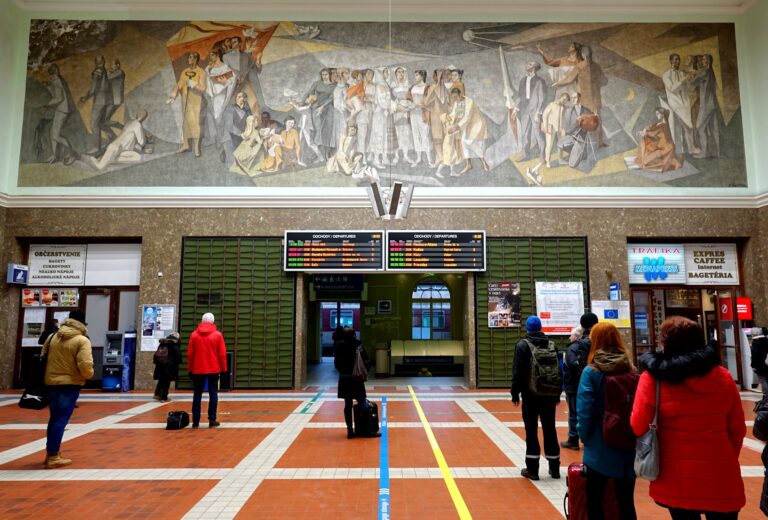
2 Comments. Leave new
Dear Bjorn,
thanks for your detailed report. We visited the tripoint where Slovakia, Hungary and Austria meet, today, but we couldn’t take the route you have described. There is now a border control from Slovakia to Hungary. We were denied to cross, so we went by car close to the Rajka highway border. There is a little bridge across the highway. The other bridge, which you took has now a fence and it’s not possible to enter from the Slovakian side. Hope this Covid restrictions will vanish soon and they will remove the fence.
All the best
Thank you for the update, Georg. I’m glad you managed to get to the tripoint, at least! I didn’t meet a single person on my walk, so the Covid risk was minimal, but I guess it’s better to be safe than sorry in the situation right now.
Happy trails, with or without border control!